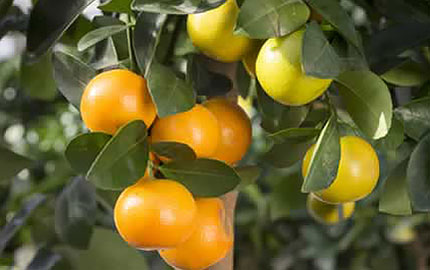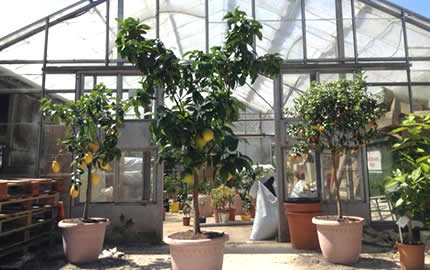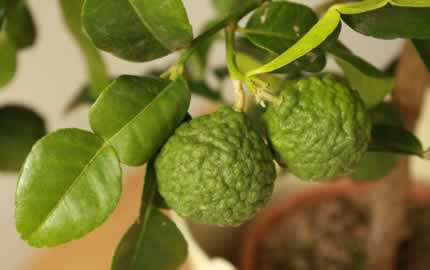Caring for your Citrus in the Growing Season - updated April 2023
Watch our TOP 10 tips for looking after citrus and learn how to get the most from these rewarding plants.
As the weather and day length changes, so does the care that your citrus trees need. Because sometimes people can be caught out by this, we've put together our TOP 5 tips to remember for the Spring growing season.
Spring 2023 has been pretty unsettled with strong winds and downpours and here in Sussex we're still seeing some pretty cold nights. In some areas of the UK and in a sheltered garden it might be warm enough to move your trees outside for the season but if in doubt wait another week or two until you are sure there are no more overnight frosts coming.
Our TOP 5 tips for looking after your Citrus plants during Spring
1. Watering
As the temperature and light levels rise you will probably notice that your citrus tree starts to put on new growth. The amount of water your tree will need will be considerably more now that the days are longer.
As always water heavily from the top and let the excess water drain away. Don't let your citrus tree stand in water and don't water again until the top of the soil starts to feel dry to the touch.
In our Nursery we have gone from weekly watering in winter, to twice weekly watering in February to 3-4 times a week at the moment. How quickly the top of the soil dries out for you will depend on the position and temperature you are keeping it in and even the size of the plant compared to its pot.
2. Position
We all love sunshine, citrus more than most. Remember most citrus prefer to be above at least 5C in the winter. That means the coolest but very lightest place you can find indoors but now the days and nights are getting warmer you might want to consider moving your plant outside.
Citrus trees fall into 3 main categories for hardiness:-
- Non-hardy Calamondins, Sweet Oranges, Kumquats, Tahiti Limes, Grapefruits and Mandarins should be kept above 5C and it's best to keep them inside until the night time temperature is consistently above 5C which might be as late as the end of May in some areas of the country. In the meantime choose the sunniest place in the house away from draughts and radiators.
- Nearly hardy Lemon trees, Chinottos and Kaffir limes will be fine in temperatures right down to zero and will even tolerate -1C or -2C for short periods. In most areas of the UK they can now go outside as long as you keep an eye out for unusually cold spells and protect from cold winds . In particularly wet weather it's also important to make sure that your tree is not sitting in a puddle of water and that it protected from the worst downpours. Keep an eye out for any hard frosts and remember it’s not the leaves you need to worry about but the rootball – this must not freeze! You can wrap the pot with hessian or fleece to extend the season outdoors and/or bring it close to the wall of your house to give your tree a bit of extra protection.
Hardy Yuzus and Finger Limes can withstand temperatures down to -15C. It's still best to keep these in a pot as they will suffer if they become too waterlogged but these hardy varieties are grown on Poncirus trifoliate stock and should withstand all that a British winter can throw at them.
At this time of year your citrus trees will usually start to put on new growth and blossom, generally we find that lemons, limes and oranges flower earlier than kumquats, kaffir limes and finger limes but it can vary depending on the position and temperature. If you are worried that your tree is not flowering yet, try to ensure they are getting as much direct sunlight on it's leaves as possible.
Indoors you don't need a conservatory but just a nice big window to place your tree or trees beside. Try to choose a place that is free from draughts and away from any radiators (especially under floor heating) and where the temperature is reasonably constant.
3. Summer Feed
Citrus benefit from a balanced Summer and Winter Citrus Feed.
The Summer Feed has more Nitrogen for leaf growth and the Winter Feed has proportionately more Phosphorous and Potassium to help develop fruits. At this time of year you should be swopping over from a winter to a summer feed and using this every other watering to keep your tree at its best.
You should be able to buy citrus feed from a good garden centre or of course you can buy the citrus feed we use for £7.50 and have it delivered free of charge. Buy summer feed
4. Watch for Leaf Drop
Citrus trees are not deciduous. One or two leaves is not too much of a concern but more than this and it’s a sign that your tree is unhappy. This is almost always to do with too little or too much water. At this time of year typically we find people underestimate how much water their tree needs but if you are not sure then please do give us a call on 01825 721162 and we’ll do our best to advise you.
Other things that can cause leaf drop are sudden or dramatic changes in temperature, under floor heating or being too near to a radiator or being in too draughty a position - but again if you're not sure - do get in touch.
January and February are the toughest months of the year for citrus trees when overcast skies and short days mean they are surviving on minimal light for weeks on end. Some varieties are tougher than others but we find even in our greenhouses with maximum light, some of the limes particularly, will develop a bit of leaf drop but by now they should be putting on some new growth to replace those dropped leaves.
5. Treat early for Pests
Whilst your plant is outdoors birds and other insects, plus the cooler temperatures will keep most pests at bay. However, indoors over winter, the warm conditions can become breeding grounds for pests. For this reason, if you do have pest outbreaks or you have had them in previous years you might want to consider moving your tree outside as soon as the temperature is warm enough.
Scale, mealy bug, red spider mite, aphids and caterpillars all do like citrus trees but the trick is to catch them early. Round brown circles, white sticky fluff, webbing, holes in the leaves or stickiness are all signs of pest attack and should be treated as soon as possible. A soapy washing up liquid solution is normally good enough if the infestation hasn't got too advanced. Spray on to the leaves morning or evening a few times a week until it's cleared.
Alternatively we sell a really good plant based insecticide called 'SB invigorator' or for a whole host of other natural biological controls we recommend our friends at www.ladybirdplantcare.co.uk
Not sure what you've got? Send us a picture by email or give us a call and we'll be more than happy to help you identify any problems.
Finally don't forget to stop and smell the blossom!
Although citrus don't always follow a strict fruiting season in the UK, they usually flower at some point between February and May, so do find time to enjoy the fragrant blossom when it's out.
For more information about pruning, repotting and year round care check out our range of plant care guides.



